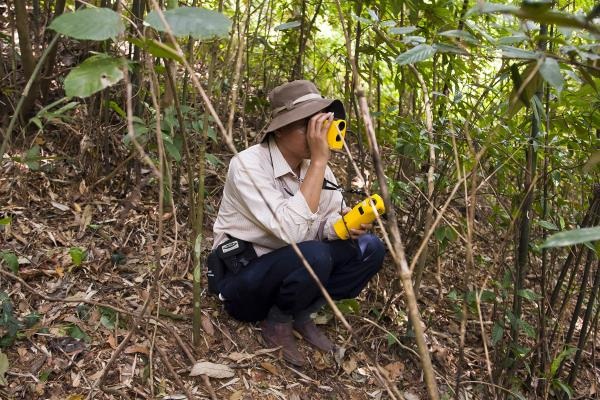
26 July 2017, Rome - FAO has developed new guidelines aimed at helping countries develop strong National Forest Monitoring Systems, which are key to measure progress towards the Sustainable Development Goals (SDGs).
To fulfil their pledges under the Paris Climate Agreement and Agenda 2030 countries are expected to collect more detailed forestry data. This not only includes information on the size and growth or decline of their forests, but also key aspects of sustainable forest management, such as the role of forests in the conservation of biodiversity, reducing impacts of climate change and provision of other ecosystem services.
In addition, forest information on socio-economic aspects including forests' contribution to livelihoods and poverty reduction, have become critical for national planning.
Paving the way towards the SDGs
The Voluntary Guidelines on National Forest Monitoring aim to support countries in collecting, compiling and analyzing data on forest resources to enable them to adopt evidence-based policies and practices, which will help them to achieve sustainable management of forest resources in line with the Sustainable Development Goals.
"The demand for reliable, up-to-date and more diverse forestry data and stronger analytical capacities at a national level has grown considerably in recent years," said Eva Muller, Director of FAO's Forestry Policies and Resources Division. "Understanding forest resources and how they change is key to address climate change and make progress towards the Sustainable Development Goals."
"These guidelines, which draw on experiences and lessons learned from FAO member countries and FAO national forest monitoring projects provide good practices, and a framework and tools for planning and implementing multi-purpose national forest monitoring," she added.
Information gap
Forests are complex systems and their monitoring draws upon a variety of data and information sources. It is common for forest inventories to collect data on more than 100 variables.
In 2010, only 45 countries worldwide were able to assess changes in forest area and characteristics through consecutive systematic national forest inventories, suggesting a serious gap in information. Moreover, it is likely that the data collected is incomplete.
Forest monitoring can improve food and energy security
The guidelines aim to fill this gap offering principles and methodology on how to collect more and better data on trends and outlook in the forestry sector and on related issues such as the demand for food, energy and wood fibre as well as employment and rural development issues. This information will also help policy-makers boost the contribution of forests to sustainable energy and food security.